.jpg)

Return to front page
Inaugural inductees (2017)
1. Tim Seres
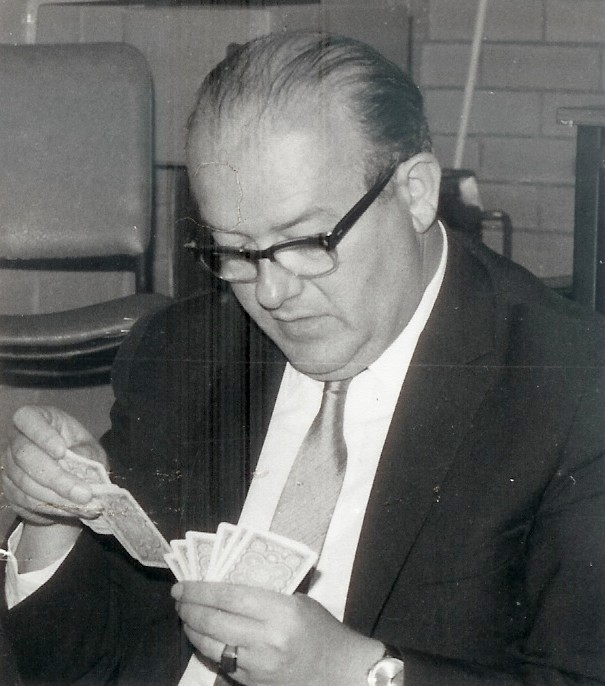 The ten panellists who voted were unanimous in placing Tim Seres in the first spot. At the peak of Tim’s career, he was automatically selected in the Australian Team (choosing his own partner) with the remaining four players coming from the results of trials. In international competition he usually played every session, in recognition of his exceptional stamina and outstanding skills. He always displayed good temperament at the bridge table and was renowned for his politeness towards both partners and opponents. He was a very fast player and could work out card play problems in 10-15 seconds – problems that would take ordinary players several minutes to figure out. He had a photographic memory; he once said, "I have hardly ever forgotten a card in my life if it’s been played in front of me".
The ten panellists who voted were unanimous in placing Tim Seres in the first spot. At the peak of Tim’s career, he was automatically selected in the Australian Team (choosing his own partner) with the remaining four players coming from the results of trials. In international competition he usually played every session, in recognition of his exceptional stamina and outstanding skills. He always displayed good temperament at the bridge table and was renowned for his politeness towards both partners and opponents. He was a very fast player and could work out card play problems in 10-15 seconds – problems that would take ordinary players several minutes to figure out. He had a photographic memory; he once said, "I have hardly ever forgotten a card in my life if it’s been played in front of me".
2. Dick Cummings
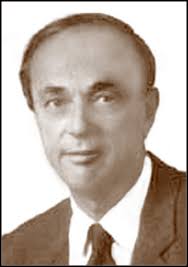 Dick Cummings represented Australia eleven times between 1960 and 1984 and was a member of the Bermuda Bowl bronze medal winning teams of 1971 and 1979. He won the Bols Brilliancy Prize for his play of a hand at the 1980 Olympiad in Valkenburg. He was also an eminent bridge teacher and columnist, whose columns appeared regularly in the Sun Herald from 1978 and the Sydney Morning Herald from 1981. He was editor of the World Bridge News from 1989 to 1994.
Dick Cummings represented Australia eleven times between 1960 and 1984 and was a member of the Bermuda Bowl bronze medal winning teams of 1971 and 1979. He won the Bols Brilliancy Prize for his play of a hand at the 1980 Olympiad in Valkenburg. He was also an eminent bridge teacher and columnist, whose columns appeared regularly in the Sun Herald from 1978 and the Sydney Morning Herald from 1981. He was editor of the World Bridge News from 1989 to 1994.
3. Roelof Smilde
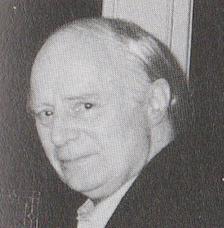 Roelof represented Australia in the Bermuda Bowl in 1971, 1976 and 1977; in the Olympiad in 1964, 1968, 1972, 1976 and 1980; in the Far East Teams in 1967, 1968, 1969, 1970, 1971, 1972, 1975, 1977 (npc), 1981, 1984 and 1986. He was a member of the winning NSW team in the Interstate Teams in 1958, 1961,1962, 1963, 1965, 1975,1976, 1980 and 1983. He won the National Open Teams in 1974, 1976, 1977 and 1986.
Roelof represented Australia in the Bermuda Bowl in 1971, 1976 and 1977; in the Olympiad in 1964, 1968, 1972, 1976 and 1980; in the Far East Teams in 1967, 1968, 1969, 1970, 1971, 1972, 1975, 1977 (npc), 1981, 1984 and 1986. He was a member of the winning NSW team in the Interstate Teams in 1958, 1961,1962, 1963, 1965, 1975,1976, 1980 and 1983. He won the National Open Teams in 1974, 1976, 1977 and 1986.
4. Denis Howard
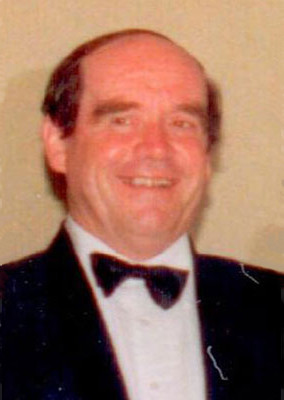 Denis Howard represented Australia at the Olympiads of 1964, 1968 and 1976, the Bermuda Bowl in 1971 and 1976 and the Far East Championships in 1969 and 1975. He won his first national title in 1957, and in the period 1957-1976 won the Australian Pairs Championships six times, the Interstate Teams twelve times, and the National Open Teams Championship once. He retired from active competition in 1976. He was active in bridge administration from 1959 onwards, being at various times, Chairman of the NSWBA and President of the ABF. He was a member of the Executive Council of the World Bridge Federation from 1982-1986 and was elected President in 1986 and reelected in 1990. He was the founding editor of this magazine in 1970 and wrote a bridge column for the National Times.
Denis Howard represented Australia at the Olympiads of 1964, 1968 and 1976, the Bermuda Bowl in 1971 and 1976 and the Far East Championships in 1969 and 1975. He won his first national title in 1957, and in the period 1957-1976 won the Australian Pairs Championships six times, the Interstate Teams twelve times, and the National Open Teams Championship once. He retired from active competition in 1976. He was active in bridge administration from 1959 onwards, being at various times, Chairman of the NSWBA and President of the ABF. He was a member of the Executive Council of the World Bridge Federation from 1982-1986 and was elected President in 1986 and reelected in 1990. He was the founding editor of this magazine in 1970 and wrote a bridge column for the National Times.
5. Bobby Richman
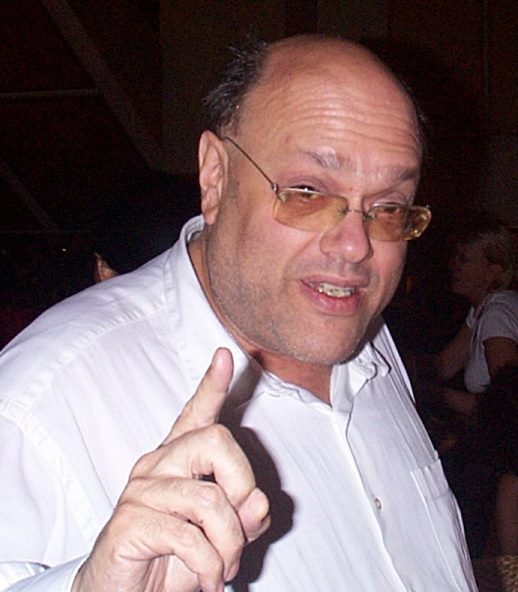 Bobby Richman represented Australia more than twenty times in international competition. He participated in the Bermuda Bowl (World Open Teams) in 1977, 1979, 1999 and 2003, the World Open Teams Olympiad (now the World Bridge Games) in 2000 and was non-playing captain of the 1988 Open Team. He was a member the Asia Pacific Open Teams in 1979, 1982, 1984, 1990, 1994, 1999, 2002, 2005 and 2007. He also played in the World Seniors Teams in 2009, won the Asia Pacific Seniors Teams 2008 and played again in 2011. He would have played for the Seniors Team in the 2013 event. He was a member of the Commonwealth Bridge Nations Championships teams in 2002. He won numerous national and local events. He won almost 80 nationally significant events, including 16 wins in the Gold Coast Open events (nine in the teams, seven in the pairs) and was the member of five winning interstate championship teams. His game was marked by a combination of unorthodox "know no fear" bidding combined with outstanding card play.
Bobby Richman represented Australia more than twenty times in international competition. He participated in the Bermuda Bowl (World Open Teams) in 1977, 1979, 1999 and 2003, the World Open Teams Olympiad (now the World Bridge Games) in 2000 and was non-playing captain of the 1988 Open Team. He was a member the Asia Pacific Open Teams in 1979, 1982, 1984, 1990, 1994, 1999, 2002, 2005 and 2007. He also played in the World Seniors Teams in 2009, won the Asia Pacific Seniors Teams 2008 and played again in 2011. He would have played for the Seniors Team in the 2013 event. He was a member of the Commonwealth Bridge Nations Championships teams in 2002. He won numerous national and local events. He won almost 80 nationally significant events, including 16 wins in the Gold Coast Open events (nine in the teams, seven in the pairs) and was the member of five winning interstate championship teams. His game was marked by a combination of unorthodox "know no fear" bidding combined with outstanding card play.
6. Victor Champion
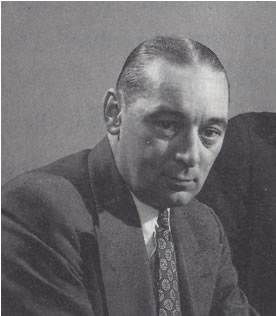 Victor Champion was the captain of 16 Victorian teams which won seven Australian championships between 1934 and 1961. He was winning captain three times in a row in 1934 to 1936, an achievement surpassed only by Bill Schaufelberger in 1947-50. He was known for his outstanding technical ability combined with flawless table manners and pioneered the practice of intense rehearsal and training for his teams, with an emphasis on understanding of one's own system. He was also an important bidding theorist in the early days of contract. He was an early practitioner of two-over-one when Culbertson was dominant and during the 1940s developed the Champion system used by Victorian teams, which combined elements of the Sims and Culbertson approaches. He was also a skilled bridge writer. He was selected for the first Australian team to play in Turin in 1960 but, at a time when players paid their own expenses, was unable to compete for financial reasons.
Victor Champion was the captain of 16 Victorian teams which won seven Australian championships between 1934 and 1961. He was winning captain three times in a row in 1934 to 1936, an achievement surpassed only by Bill Schaufelberger in 1947-50. He was known for his outstanding technical ability combined with flawless table manners and pioneered the practice of intense rehearsal and training for his teams, with an emphasis on understanding of one's own system. He was also an important bidding theorist in the early days of contract. He was an early practitioner of two-over-one when Culbertson was dominant and during the 1940s developed the Champion system used by Victorian teams, which combined elements of the Sims and Culbertson approaches. He was also a skilled bridge writer. He was selected for the first Australian team to play in Turin in 1960 but, at a time when players paid their own expenses, was unable to compete for financial reasons.
7. Jim Borin
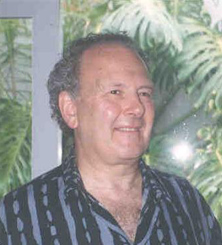 Jim Borin was a member of the Australian Team in the Olympiad and Bermuda Bowl in 1971, 1972, 1977 and 1979 and the Australian Open Team in the Asia-Pacific competitions in 1968, 1969, 1971, 1987 and 1989. The 1971 and 1979 teams finished third in the Bermuda Bowl, Australia's best ever placing. He was a member of the NSW Open Team in 1962 and 1963 and the Victorian Open Team in 1968, 1986 and 1989. His other achievements included four wins in the Interstate Open Pairs and three in the Gold Coast Pairs and one in the Australian Open Pairs. He was a five-time winner of the Australian Open Butler and finished in the top three on four other occasions. He was particularly known for his ability to and determination to extract the most from each hand. Bobby Richman once commented that Jim would "go up a drainpipe for an overtrick".
Jim Borin was a member of the Australian Team in the Olympiad and Bermuda Bowl in 1971, 1972, 1977 and 1979 and the Australian Open Team in the Asia-Pacific competitions in 1968, 1969, 1971, 1987 and 1989. The 1971 and 1979 teams finished third in the Bermuda Bowl, Australia's best ever placing. He was a member of the NSW Open Team in 1962 and 1963 and the Victorian Open Team in 1968, 1986 and 1989. His other achievements included four wins in the Interstate Open Pairs and three in the Gold Coast Pairs and one in the Australian Open Pairs. He was a five-time winner of the Australian Open Butler and finished in the top three on four other occasions. He was particularly known for his ability to and determination to extract the most from each hand. Bobby Richman once commented that Jim would "go up a drainpipe for an overtrick".
8. Mary McMahon
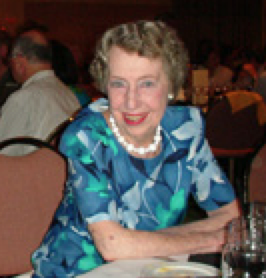 Mary McMahon represented Australia in three Women's Team Olympiads and in one Venice Cup. She also played for Australia in a number of Far East Teams Championships, winning the Women's title three times andthe Open title once (this was in 1970, the last time that Australia won this event). On the national front, she won the Women's Interstate Teams title eleven times and the Open Teams twice. She also had numerous successes in Pairs and Individual championships. At the State and Club level, she was a prolific winner. She won the Gold Coast Teams twelve times and the Pairs six times. She combined an aggressive approach to bidding with a high level of technical accomplishment in play and defence and irreproachable ethics and good sportsmanship.
Mary McMahon represented Australia in three Women's Team Olympiads and in one Venice Cup. She also played for Australia in a number of Far East Teams Championships, winning the Women's title three times andthe Open title once (this was in 1970, the last time that Australia won this event). On the national front, she won the Women's Interstate Teams title eleven times and the Open Teams twice. She also had numerous successes in Pairs and Individual championships. At the State and Club level, she was a prolific winner. She won the Gold Coast Teams twelve times and the Pairs six times. She combined an aggressive approach to bidding with a high level of technical accomplishment in play and defence and irreproachable ethics and good sportsmanship.
9. Norma Borin
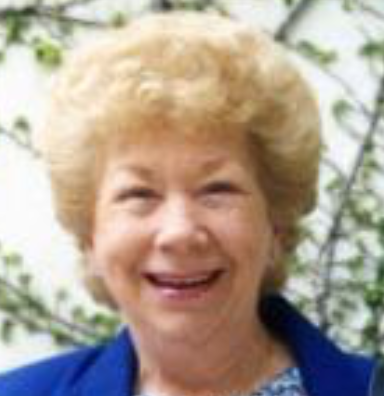 Norma Borin was a member of the Australian Team in the Olympiad and Bermuda Bowl in 1971, 1972, 1977 and 1979 and the Open Team in the Asia-Pacific competitions in 1968, 1969, 1971, 1987 and 1989. The 1971 and 1979 teams finished third in the Bermuda Bowl – Australia’s best placing. She was particularly noted for world-class defence and ability to find the best lead.
Norma Borin was a member of the Australian Team in the Olympiad and Bermuda Bowl in 1971, 1972, 1977 and 1979 and the Open Team in the Asia-Pacific competitions in 1968, 1969, 1971, 1987 and 1989. The 1971 and 1979 teams finished third in the Bermuda Bowl – Australia’s best placing. She was particularly noted for world-class defence and ability to find the best lead.
10. Bill Schaufelberger
 Bill Schaufelberger was the dominant figure in bridge in Australia in the 1950s and 1960s. After strong performances in NSW in 1936 and 1937, including the Teams Championship, he first played for NSW in the team that beat New Zealand in the 1937 challenge match. He was again a member of the NSW team in 1946 when the National Championships resumed after the war and from that point he was captain of the NSW team at the ANC every year (except 1953 when he was asked but unavailable) between 1947 and 1957, and again in 1961. On nine of the eleven years in which he captained the team, NSW won the Interstate. He was regarded as a master of the art of playing as if double dummy – identifying possible distributions and using them to his advantage. As with many great players, a feature of his play was to eschew finesses that nine out of ten players would take without a thought. Bill's contribution to bridge went well beyond his own play. Crucially, he was responsible for bringing along a number of the players who dominated Australian bridge in the sixties and seventies and beyond, including Seres, Howard, Cummings and Smilde.
Bill Schaufelberger was the dominant figure in bridge in Australia in the 1950s and 1960s. After strong performances in NSW in 1936 and 1937, including the Teams Championship, he first played for NSW in the team that beat New Zealand in the 1937 challenge match. He was again a member of the NSW team in 1946 when the National Championships resumed after the war and from that point he was captain of the NSW team at the ANC every year (except 1953 when he was asked but unavailable) between 1947 and 1957, and again in 1961. On nine of the eleven years in which he captained the team, NSW won the Interstate. He was regarded as a master of the art of playing as if double dummy – identifying possible distributions and using them to his advantage. As with many great players, a feature of his play was to eschew finesses that nine out of ten players would take without a thought. Bill's contribution to bridge went well beyond his own play. Crucially, he was responsible for bringing along a number of the players who dominated Australian bridge in the sixties and seventies and beyond, including Seres, Howard, Cummings and Smilde.
11. Michael Sullivan
 Michael Sullivan was a member of the winning team in the 1937 and 1939 Australia and New Zealand Olympiads. He was also a member of the winning team in the Australian section of the World Olympic contests in 1939, 1940 and 1941. With Harold Hiley, he won the Australia Par Point Open Pairs Championship in 1942, 1950 and 1956. In 1950 the partnership achieved an astonishing 98%. He was a member of all Queensland teams between 1946 and 1957. In 1958 he was a member of the first Australian touring team (with Bill Schaufelberger, Tim Seres and Dick Cummings). The team played in eleven tournaments for three wins and four seconds, making a very positive impact on the image of Australian bridge. During the 1930s he built an international reputation as a bridge writer through his contributions to Bridge World (US) and The Bridge Magazine (UK). He was regarded as one of the very best analysts and setters of double dummy puzzles.
Michael Sullivan was a member of the winning team in the 1937 and 1939 Australia and New Zealand Olympiads. He was also a member of the winning team in the Australian section of the World Olympic contests in 1939, 1940 and 1941. With Harold Hiley, he won the Australia Par Point Open Pairs Championship in 1942, 1950 and 1956. In 1950 the partnership achieved an astonishing 98%. He was a member of all Queensland teams between 1946 and 1957. In 1958 he was a member of the first Australian touring team (with Bill Schaufelberger, Tim Seres and Dick Cummings). The team played in eleven tournaments for three wins and four seconds, making a very positive impact on the image of Australian bridge. During the 1930s he built an international reputation as a bridge writer through his contributions to Bridge World (US) and The Bridge Magazine (UK). He was regarded as one of the very best analysts and setters of double dummy puzzles.